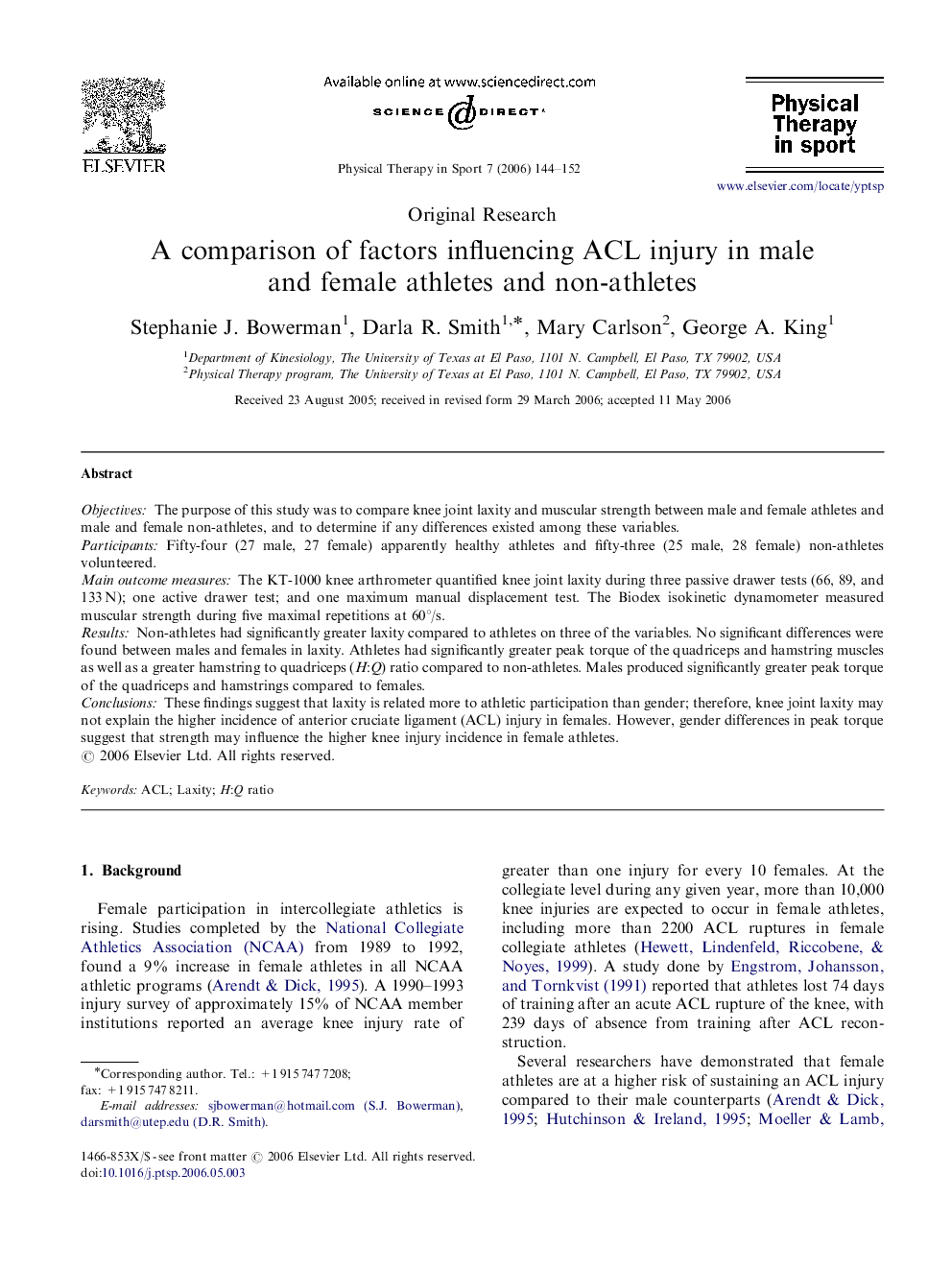| کد مقاله | کد نشریه | سال انتشار | مقاله انگلیسی | نسخه تمام متن |
|---|---|---|---|---|
| 2714360 | 1145242 | 2006 | 9 صفحه PDF | دانلود رایگان |

ObjectivesThe purpose of this study was to compare knee joint laxity and muscular strength between male and female athletes and male and female non-athletes, and to determine if any differences existed among these variables.ParticipantsFifty-four (27 male, 27 female) apparently healthy athletes and fifty-three (25 male, 28 female) non-athletes volunteered.Main outcome measuresThe KT-1000 knee arthrometer quantified knee joint laxity during three passive drawer tests (66, 89, and 133 N); one active drawer test; and one maximum manual displacement test. The Biodex isokinetic dynamometer measured muscular strength during five maximal repetitions at 60°/s.ResultsNon-athletes had significantly greater laxity compared to athletes on three of the variables. No significant differences were found between males and females in laxity. Athletes had significantly greater peak torque of the quadriceps and hamstring muscles as well as a greater hamstring to quadriceps (H:Q) ratio compared to non-athletes. Males produced significantly greater peak torque of the quadriceps and hamstrings compared to females.ConclusionsThese findings suggest that laxity is related more to athletic participation than gender; therefore, knee joint laxity may not explain the higher incidence of anterior cruciate ligament (ACL) injury in females. However, gender differences in peak torque suggest that strength may influence the higher knee injury incidence in female athletes.
Journal: Physical Therapy in Sport - Volume 7, Issue 3, August 2006, Pages 144–152